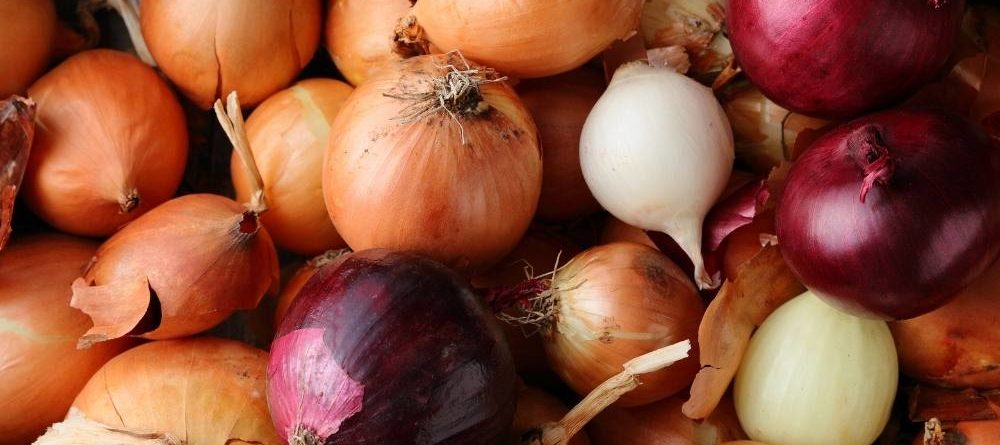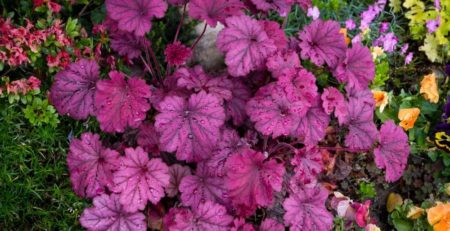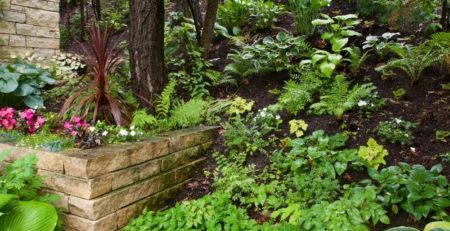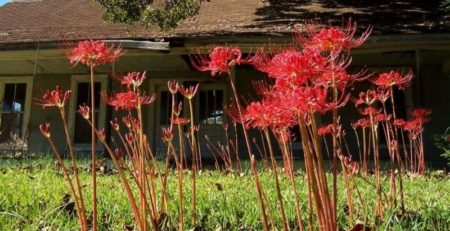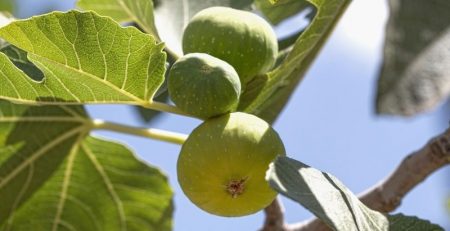Now Is the Time to Plant Onions in North Texas
Onion sets (small transplants) are one of the first things you can plant in January as soon as the soil is dry enough not to stick to your garden tools. I remember as a child “helping” my Dad plant onions in the garden—even the smallest hands can assist with this garden task.
Onions come in short-day, long-day, and intermediate day. Dallas County is considered a short-day county. You can plant red/purple onions, yellow onions, and white onions. Each tastes a little different. All of them are high in vitamins A and C.
It is important to pick the best cultivars of onions for your area. The recommended onions for North Central Texas are:
| Variety | Days to Harvest |
| Bermuda | 95 |
| Crystal Wax (Short-Day) | 60 |
| Early Grano 502 (YWR, Short-Day) | 80 |
| Granex (YWR, Short-Day) | 100 |
| Red Burgandy (Short-Day) | 110 |
| Yellow Sweet Spanish (Long-Day) | 125 |
| Yellow TX Supersweet 1015 (Short-Day) | 110 |
Preparing the Garden Site
Onions grow best in full sun and well-drained soil. To prepare your garden for the onions, work the soil loose, about 8-10 inches deep. Put three inches of compost over the soil, then work the compost in the soil so that it is evenly distributed throughout the disturbed dirt. Make a hill 2-3 inches high, then rake the top of the hill flat. Break up large clods of dirt so the soil is fine across the hill.
Planting the Sets
Planting the sets is not difficult. Make a furrow that is ¾ inches deep in the hill you have prepared. Take each set and put it in the furrow. Space the plants three inches apart so they have room to grow. Gently fill in enough soil to keep the onion plant vertical.
Planting from Seed
You can grow onions from seed as well as sets. Onion seeds are best planted ¼ inch deep in October. Place the seeds one inch apart. When the onion plants are about six inches high, thin to 2-3 inches between the onion plants. Don’t crowd the plants or they will not grow as big. You can eat the thinned onions as green onions. You can plant seeds in January, but your onions will not get as big as fall planted seeds before they have flowers (bolt). The onions are not good to eat after they bolt.
Planting Transplants
If you do not want to plant seeds or sets, it is possible to get transplants. These are larger than sets so take less time to mature. Transplants may be hard to find. They should be planted as early in the spring as possible. Space them 4-6 inches apart so that they have room to grow.
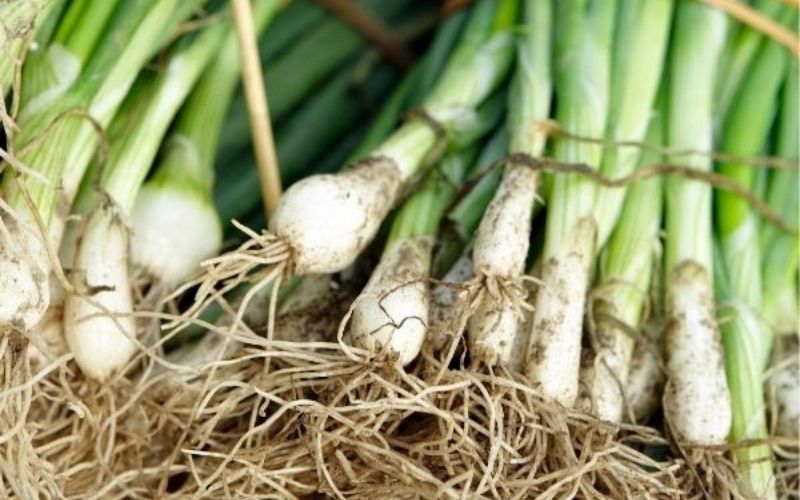
Onion sets ready to plant.
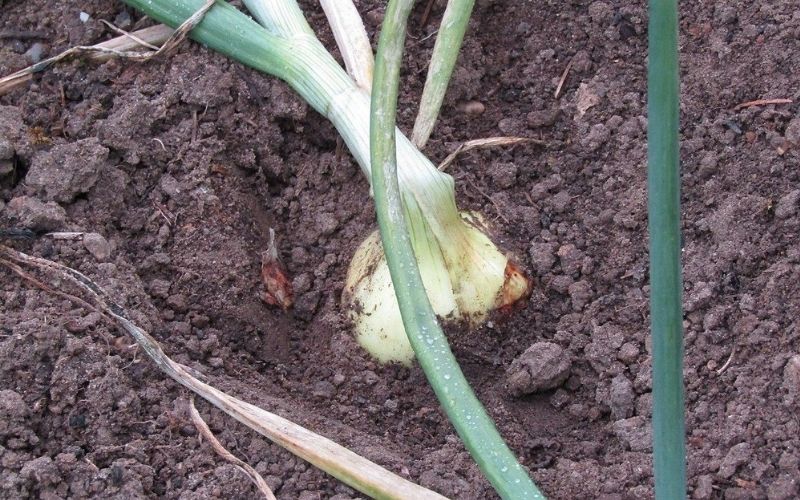
Ready to harvest onion plant growing in a garden in the village of Trimingham Norfolk, England. Taken by Kolforn under CC license.
Fertilizing
Onion sets, transplants, and seeds need fertilizer to grow well. Spread 2-3 pounds of a fertilizer such as 10-10-10 over 100 feet, then mix the fertilizer in the first 2-3 inches of soil. Water the onions after you have planted them and spread the fertilizer. When the onion plants have 5-6 leaves, spread ½ cup of fertilizer for each 10 feet of row. Water the fertilizer in.
Watering
Onions need one inch of water a week when it is cool, but may need more in dry, hot, and windy conditions. It is best to water slowly and deeply to encourage deep roots that are sturdy and plump.
Weeding
Onions need to be kept weeded. The weeds compete with the onions for nutrients and water. Pulling weeds by hand is the best way to get rid of them. Do not hoe the onion roots when weeding. You should weed before the weed plants are 3-4 inches tall for easiest removal. Weeds can outcompete your onions so make sure you keep the weeds under control.
Diseases and Pests
Few pests bother onions. The major one you will find will be onion thrips (Thrips tabaci). These tiny insects are usually found between the center leaves. They leave behind slivery patches that may look like trails through the leaves. A severe infestation of onion thrips may cause leaves to become dry and yellow or die. Thrips carry several types of viruses that are incurable and will kill your onions.
Onions can become spotted or have brown tips from fungal diseases. Several different fungal diseases can infect your onions, so take a picture of the infected onion plant and send it to our help desk for a diagnosis (dallasmg@ag.tame.edu).
Sulphur will kill both the thrips and most fungal diseases. Make sure that anything you put on your onions expressly mentions being allowed on onions and follow label directions for use. Some things will not only get rid of the pests and diseases, but will make you sick, too.
Harvesting Onions
Harvest green onions any time after the plant is at least as big as a pencil in diameter. You will know it is time to harvest mature onions when the stalks weaken and start to fall over. This should happen in late May to early June. Pull the onions, brush the dirt off of them, and let them dry in the garden a day or two before bringing them in. Trim off the stalks and roots and let the onions continue to dry in areas with good air circulation. A wire basket in a cool, dry, dark place is a good place to store the onions. They can also be stored in the crisper of your refrigerator but will not last as long. Do not store them in a hot garage or they will spoil rapidly.
Links for more information
Easy Gardening: Onions. Joseph Masabni, Assistant Professor and Extension Horticulturist, Texas A&M University System.
ONION, LEEK, SHALLOT, & GARLIC. Clemson University Extension.
Onions. Mississippi State University Extension.
Onions and Shallots. University of Florida/IFAS Extension.
Onion Thrips. Wisconsin Horticulture.


